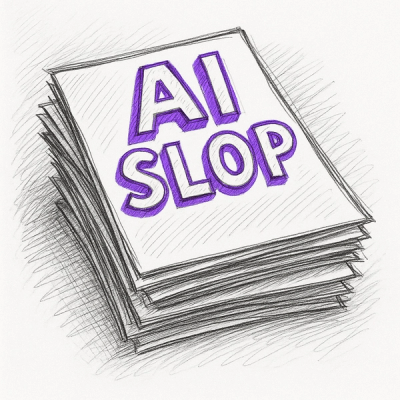
Security News
Official Go SDK for MCP in Development, Stable Release Expected in August
The official Go SDK for the Model Context Protocol is in development, with a stable, production-ready release expected by August 2025.
html-form-validation
Advanced tools
This module is to validate HTML forms. Text fields, emails, phones, checkobxes etc.
Install validator module
npm i -save html-form-validation
Add validator to your project.
AMD
require(['html-form-validation', function (Validator) {});
CommonJS
var Validator = require('html-form-validation');
ES6
import Validator from 'html-form-validation';
Inline
<script src="html-form-validation.js"></script>
Also, include CSS file (src/css/validator.css)
<link href="validator.css" rel="stylesheet">
Validator module needs proper HTML-markup (more in example section)
<form>
<!--Email field-->
<label class="form-input" data-validation="required" data-validation-type="email">
<input type="email">
<div class="error"></div>
</label>
<!--Text field. With min and max length (can be only 'min' or only 'max')-->
<label class="form-input" data-validation="required" data-validation-type="text">
<textarea data-validation-condition="length" data-min-length="50" data-max-length="200"></textarea>
<div class="error"></div>
</label>
<!--Text field. With custom error message, 'equal' codition-->
<label class="form-input" data-validation="required" data-validation-type="text" data-validation-text="Incorrect data">
<input type="text" data-validation-condition="equal" data-equal="dataToCompare">
<div class="error"></div>
</label>
<!--Validate form button-->
<button class="validate-form-button" type="submit">Validate form</button>
</form>
Initialize validator module
/**
* First param. Form to validate.
*
* @type {jQuery|HTMLElement|String}
*/
var param1 = $('form');
/**
* Second param. Params for AJAX request performed when form is valid.
*
* @type {Function|Object}
*/
var param2 = function (context) {
console.log('%csuccess! Context:\n%o', 'color: blue;', context);
// function should return Object with AJAX params.
return {
url: 'ajax/example.json',
method: 'get',
success: function () {
console.log('ajax success callback')
}
}
};
/**
* Third param. User-specified options. Unnecessary.
*
* @type {Object}
*/
var param3 = {
// If form is situated in bootstrap modal (login form etc.),
// incorrect field state will be removed when modal is closed.
// DEFAULT: false
modal: false,
// Selector to find form's fields.
// When changing, you should also change CSS styles.
// DEFAULT: '.form-input'.
fieldsSelector: '.form-input',
// Remove fields incorrect state, when clicked outside the form.
// DEFAULT: false.
removeOnFocusOut: true
};
/** Initialize Validator */
new Validator(param1, param2, param3);
Ajax options function can perform async actions before returning ajax options object (only ES7 version).
const param2 = context => {
// function should return Promise
return new Promise((resolve, reject) => {
// perform async actions. main ajax request will be performed on promise resolve
$.ajax({
url: 'path/to/async/action',
method: 'get',
// remember, function must return options for AJAX request
success: res => resolve({
url: 'path/to/main/ajax',
method: 'post',
success: res => console.log('main AJAX success %o', res)
}),
error: xhr => reject(xhr)
});
})
};
| Option name | Possible values | Description |
|---|---|---|
| data-validation | required / false | Validates the field when set to true. |
| data-validation-type | text / phone / email / checkbox / radio / select | Which method used to validate field. Each type has its own. |
| data-validation-text | any string | Text used as error message. Otherwise validator will use its own messages for every field type. |
| Type | Description | Available input types |
|---|---|---|
| text | Validates text field. Input can have additional attribute data-validation-condition with available length and equal values. If set to length - Validator will look for data-min-length, data-max-length or data-length attributes. If set to equal - Validator will look for data-equal attribute. Then validator will match value with values from attributes. | input / textarea |
| phone | Under development. No additional options are available. | input |
| Validates email field. No additional options are available. | input | |
| checkbox | At least one checkbox in field should be checked and visible. No additional options are available. | input[type="checkbox"] |
| radio | At lease one radio should be selected. No additional options are available. | input[type="radio"] |
| select | Checks for selected option. Its value should not equal 0 or false. No additional options are available. | select |
Run tests
npm run-script runTest
Current version is 0.1.3
FAQs
HTML forms validation plugin
We found that html-form-validation demonstrated a not healthy version release cadence and project activity because the last version was released a year ago. It has 1 open source maintainer collaborating on the project.
Did you know?

Socket for GitHub automatically highlights issues in each pull request and monitors the health of all your open source dependencies. Discover the contents of your packages and block harmful activity before you install or update your dependencies.

Security News
The official Go SDK for the Model Context Protocol is in development, with a stable, production-ready release expected by August 2025.

Security News
New research reveals that LLMs often fake understanding, passing benchmarks but failing to apply concepts or stay internally consistent.

Security News
Django has updated its security policies to reject AI-generated vulnerability reports that include fabricated or unverifiable content.